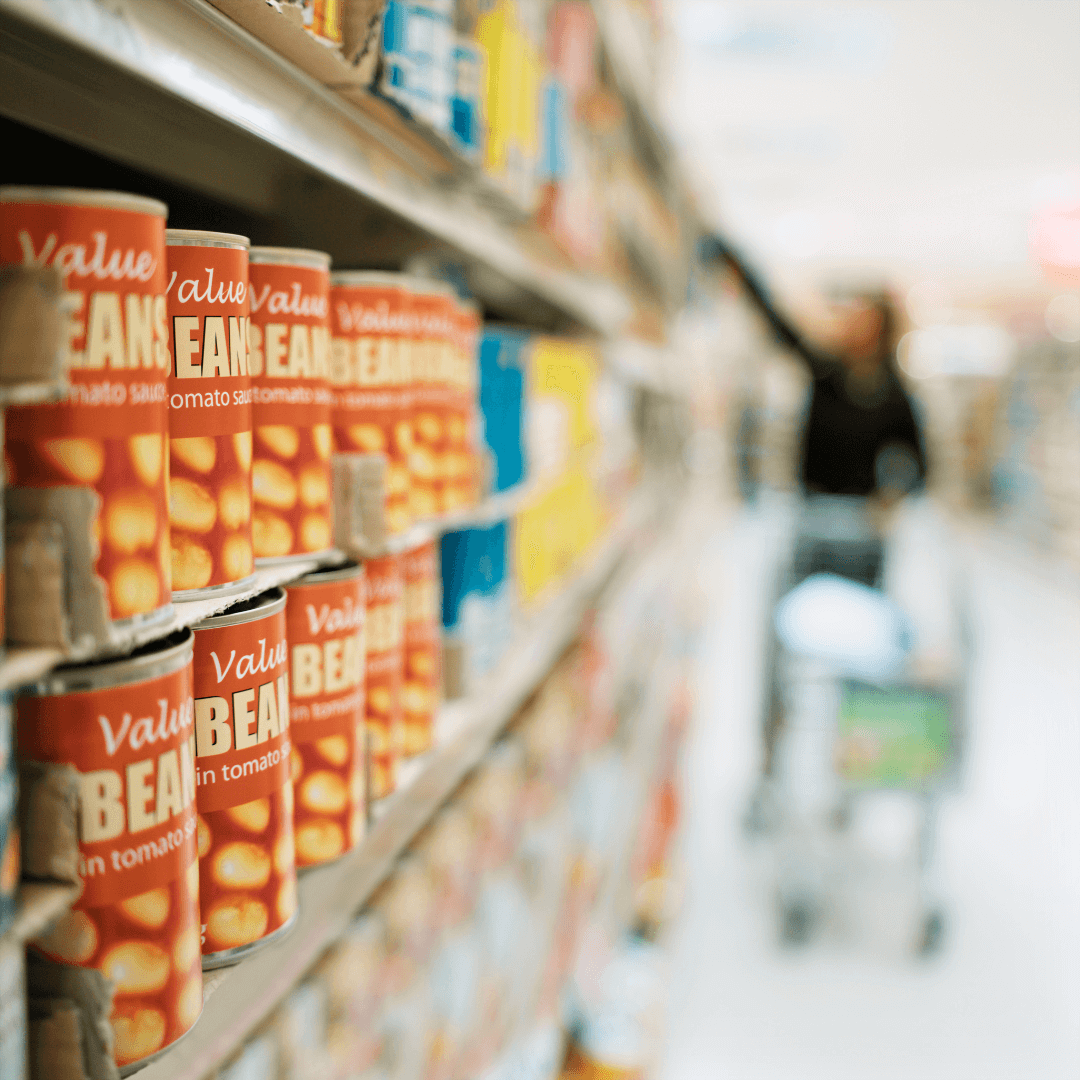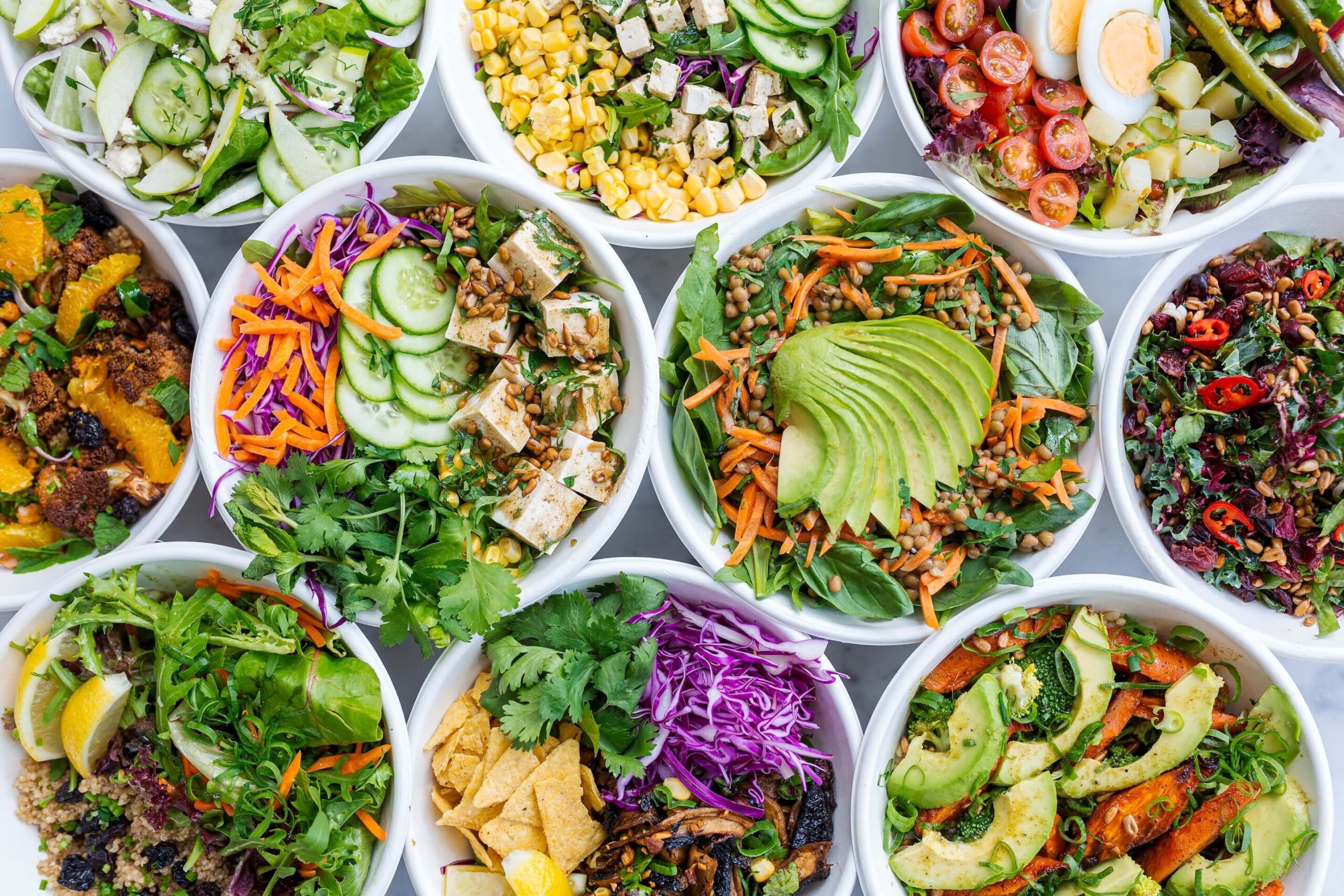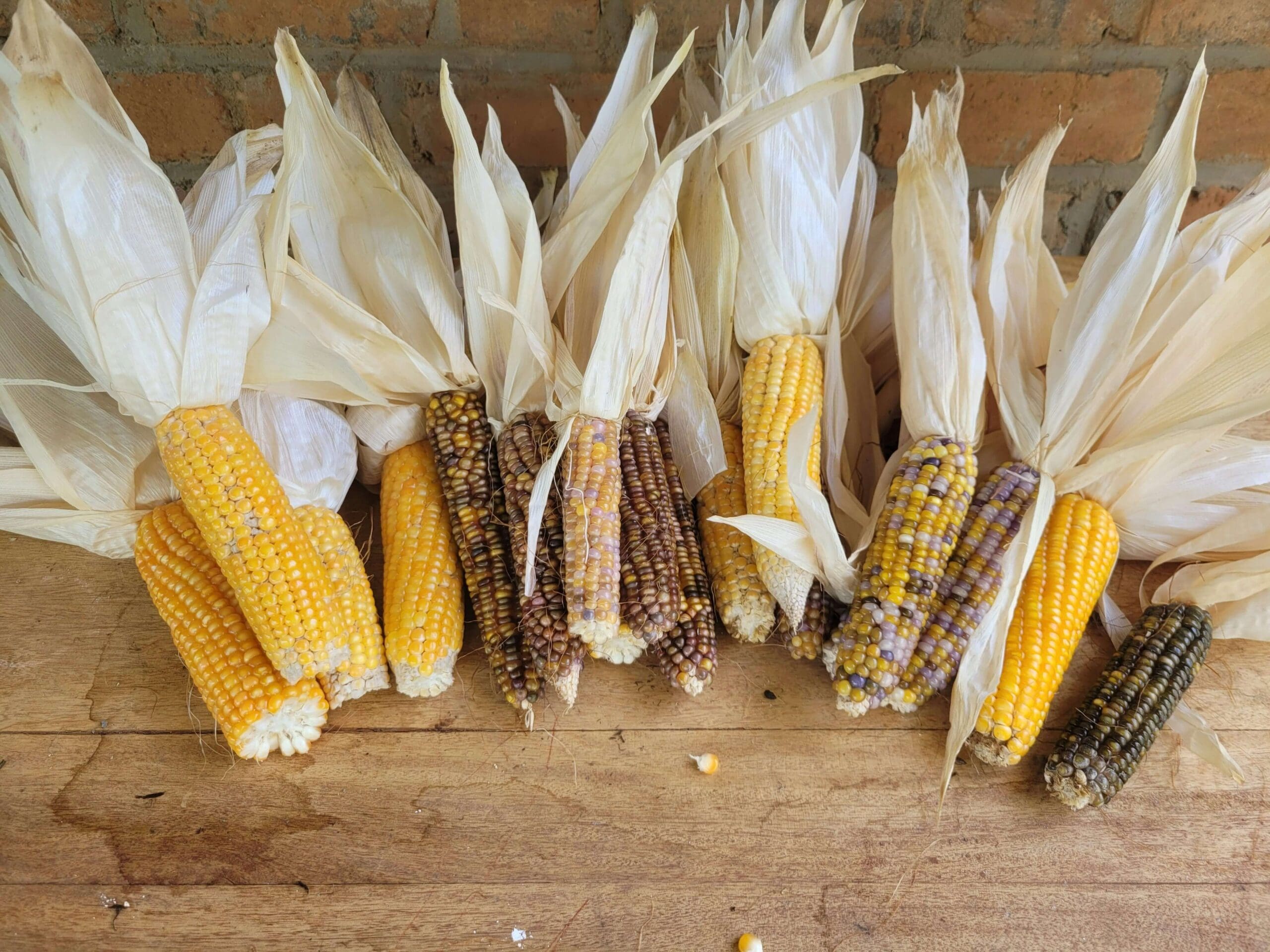Let’s talk about something that might be sitting in your pantry right now: canned foods. You’ve probably heard mixed messages about whether tinned foods belong in a healthy diet.
Some say they’re too high in sodium, others worry about BPA, and many question if the canning process destroys all the nutrients. As an oncology dietitian, I’m here to set the record straight with actual science, not fear-based myths.
The truth is, canned foods can absolutely be part of a balanced diet. In fact, the Academy of Nutrition and Dietetics confirms that people who regularly consume canned foods actually have better nutrient intake than those who don’t.
Whether you’re dealing with food deserts, tight budgets, or simply need convenient options that reduce food waste, canned vegetables, canned beans, and other tinned foods deserve a spot in your healthy diet.
So let’s talk about it in detail.
But FIRST! Make Sure to get your free clean scan plan!
Feeling unsure what actually lowers recurrence risk? Download the free Clean Scan Plan, my NED Method (nutrition, movement, hydration, sleep, stress) to reduce cancer risk and help keep it from coming back with simple, daily actions.
Understanding Canned Food Consumption and Nutrient Intake
The canning process itself happens within hours of harvest, when fruits and vegetables are at peak ripeness. While some water-soluble vitamins like vitamin C may decrease slightly during the heating process, other nutrients become more bioavailable.
Canned tomatoes, for instance, contain higher levels of lycopene than fresh tomatoes. This powerful antioxidant becomes more accessible to your body through the heating process used in canning.
According to the USDA Dietary Guidelines for Americans, all forms of fruits and vegetables, including canned, contribute to meeting daily recommendations. The key is understanding that nutrient-dense foods come in many forms.
Fresh isn’t always best, especially when that “fresh” produce has traveled thousands of miles and sat in storage for weeks. Learn more about functional foods for cancer prevention to expand your nutrition knowledge.
The Real Benefits of Canned Foods in Your Healthy Diet
Let’s break down the actual benefits of including canned foods in your balanced diet. These aren’t just convenience factors; they’re legitimate nutritional and practical advantages backed by research from institutions like the Food Standards Australia New Zealand and the European Union food safety authorities.
Improved Diet Quality Through Consistent Access
The Supplemental Nutrition Assistance Program (SNAP program) and WIC program specifically include canned goods in their WIC food packages because they recognize the importance of shelf-stable, nutritious options.
Studies show that participants who utilize canned foods as part of these programs maintain better vegetable intake and meet more of their nutrition goals compared to those relying solely on fresh produce.
Extended Shelf Life Reduces Food Waste
With a shelf life of one to five years, canned foods significantly reduce food waste. The steel cans used for packaging have a recycling rate of 58%, making them one of the most sustainable food storage options available.
Unlike fresh produce that might spoil within days, canned goods wait patiently in your pantry until you need them. This aligns perfectly with cooking at home to reduce cancer risk.
Budget-Friendly Nutrition Year-Round
Canned beans, kidney beans, and other legumes cost a fraction of their fresh counterparts while providing the same plant-based protein and fiber. During produce shortages or off-seasons, canned fruits and vegetables offer consistent pricing and availability, making healthy eating accessible regardless of your location or season.
Convenience Without Compromise
For those managing chronic conditions or dealing with limited energy, the convenience of canned foods can mean the difference between eating vegetables and skipping them entirely. No washing, chopping, or prep work required. Open, heat if desired, and eat. This accessibility is especially important for elderly populations and those with disabilities.
Get Your Free Clean Scan Plan!
Navigating Sodium Content and Blood Pressure Concerns
One of the biggest concerns about canned foods is their sodium content and potential impact on blood pressure. Yes, salt is used in the canning process, but the situation isn’t as dire as you might think. Let’s look at what the research actually shows and how you can make informed choices.
First, it’s important to understand that canned vegetables aren’t even among the top 10 contributors of sodium in the American diet. According to research, the main culprits for excess sodium intake are restaurant meals, processed meat, and packaged snacks, not canned vegetables or beans.
The good news? You have simple, effective options to reduce sodium in canned goods:
- Draining alone reduces sodium by 36%
- Draining and rinsing reduces sodium by up to 41%
- Choose “no salt added” or “low sodium” varieties
- Check the nutrition facts label (5% DV or less is low sodium)
Even the regular versions of canned beans like baked beans or kidney beans can fit into a heart-healthy diet when you rinse them. The small amount of sodium that remains is often worth the trade-off for the convenience and nutrition these foods provide.
BPA Safety: What the Current Science Says
Bisphenol A (BPA) in can linings has been a legitimate concern, but the landscape has changed dramatically in recent years. Understanding the current state of BPA in canned foods will help you make informed decisions without unnecessary fear.
According to the Can Manufacturers Institute, over 95% of food cans are now made without BPA-based linings. The industry has largely transitioned to alternative coatings including acrylic, polyester, and olefin polymers.
The Food Standards Agency and FDA continue to monitor these alternatives for safety. This is just one example of how the food industry responds to legitimate health concerns, unlike the misleading information in why the Dirty Dozen list is useless.
If you prefer to minimize exposure further:
- Look for cans labeled “BPA-free”
- Choose brands that have publicly committed to BPA-free packaging
- Opt for foods in glass jars or Tetra Pak containers when available
- Remember that fresh and frozen foods are always BPA-free alternatives
The European Union and other international bodies continue to study and regulate food packaging materials. Current evidence suggests that modern canned foods, especially those in BPA-free cans, pose minimal risk when consumed as part of a varied diet.
Smart Shopping: Reading Food Labels and Making Nutritional Choices
Becoming a savvy canned food shopper means understanding how to read the food label and nutrition information panel effectively. The nutrition facts label is your roadmap to making choices that align with your health goals and dietary needs.
Understanding the Nutrition Facts Label
When examining canned goods, focus on these key elements of the nutrition facts label:
- Serving size: Note whether nutritional information includes liquid or just drained solids
- Sodium: Look for less than 140mg per serving for “low sodium”
- Added sugars: Choose canned fruit with no added sugar or packed in natural juice
- Saturated fat: Generally low in canned vegetables and beans
- Fiber and protein: Canned beans provide both in abundance
Best Choices for Different Categories
- Canned vegetables: Look for varieties with no added salt. Great options include tomatoes, corn, green beans, and carrots. Tinned tomatoes are especially versatile and nutritious.
- Canned beans: All varieties from black beans to chickpeas provide excellent nutrition. Even with sodium, the protein and fiber content makes them valuable for a balanced diet.
- Canned fish: Choose options packed in water rather than oil to reduce calories. Canned salmon, tuna, and sardines provide omega-3 fatty acids essential for heart health.
- Canned fruit: Select fruits packed in water or their own juice rather than syrup. Canned peaches, pears, and pineapple retain most of their vitamins.
Food Safety Guidelines for Canned Products
While canned foods are generally very safe, following proper food safety guidelines ensures you get the maximum benefit without any risk. These recommendations come from food safety experts and organizations worldwide.
Recognizing Safe vs. Unsafe Cans
Never use cans that show these warning signs:
- Dents along seams or sharp dents that could compromise the seal
- Bulging lids which may indicate bacterial growth
- Rust or leaks that could allow contamination
- Missing or damaged labels if you can’t identify contents or dates
These signs could indicate the presence of Clostridium botulinum, the bacteria that causes botulism. While extremely rare in commercial canned goods, it’s a serious concern worth preventing.
Proper Storage and Use-By Dates
Store canned goods in a cool, dry place away from temperature extremes. While canned foods can last well beyond their “best by” dates, the USDA FoodKeeper App provides specific guidance for different products. Most canned vegetables and beans maintain quality for 2-5 years when stored properly.
Once opened, transfer unused portions to storage containers and refrigerate. Never store food in opened cans as the metal can affect taste and potentially leach into acidic foods.
Practical Meal Ideas Using Canned Foods
Let’s move from theory to practice with real meal ideas that showcase how canned foods fit into everyday healthy eating. These suggestions come from registered dietitians and nutrition professionals who understand the importance of realistic, sustainable eating habits. For more ideas, check out our guide to smart snacking.
Quick Breakfast Boosters
- Add canned pumpkin to oatmeal for extra fiber and vitamins
- Top yogurt with drained canned fruit
- Mix canned beans into scrambled eggs for protein
Simple Lunch Solutions
- Combine canned tuna or salmon with avocado for a nutrient-dense sandwich
- Add kidney beans or chickpeas to any salad for plant-based protein
- Use canned soup as a base, adding fresh or frozen vegetables for extra nutrition
Dinner Made Easy
- Use tinned tomatoes for pasta sauce, chili, or curry bases
- Create bean burgers from canned black beans or chickpeas
- Add canned corn and beans to tacos or burritos
- Mix canned vegetables into casseroles or stir-fries
Creating a Balanced Approach to Food Shopping

The key to successful grocery shopping isn’t choosing between fresh, frozen, or canned foods. It’s about creating a strategic mix that works for your lifestyle, budget, and health goals. Here’s a practical approach that registered dietitians often recommend to reduce food waste while maintaining variety in your diet.
The Strategic Shopping Method
- Plan your fresh purchases: Buy 2-3 fresh vegetables you’ll definitely use within 3-4 days
- Stock your pantry: Keep a variety of canned beans, vegetables, and fruits on hand
- Fill the freezer gap: Frozen vegetables bridge the space between fresh and canned
- Rotate your usage: Use fresh first, then frozen, then canned as the week progresses
This approach ensures you always have nutritious options available while minimizing waste and maximizing your food budget.
Building Your Canned Food Pantry
Stock these versatile staples for maximum flexibility:
- Proteins: Various canned beans, canned fish, canned chicken
- Vegetables: Tinned tomatoes, corn, green beans, carrots
- Fruits: Peaches, pears, pineapple (in juice)
- Convenience items: Coconut milk, broth, tomato paste
The Bottom Line on Canned Foods and Your Health
After examining the evidence from nutritional research, food safety authorities, and practical experience, the verdict is clear: canned foods absolutely deserve a place in your healthy eating plan. They’re not a compromise or a second-best option. They’re a smart, practical choice that can help you maintain consistent nutrition regardless of your circumstances.
The Academy of Nutrition and Dietetics and nutrition experts worldwide recognize that canned foods contribute valuable nutrients to our diets. Whether you’re navigating food deserts, managing a tight budget, dealing with limited energy, or simply trying to reduce food waste, canned options provide accessible nutrition without sacrifice.
Want this applied to your life with zero guesswork? As your cancer dietitian, my 1:1 coaching builds a personalized plan using canned, frozen, and fresh options inside my NED Method – so meals are symptom-aware, budget-friendly, and effortless to repeat. I’ll map your pantry, plate, and weekly routines for results you can feel – Apply for 1:1 Coaching.
Not ready for coaching? Start with the first step my clients use. Grab the free Clean Scan Plan to learn the NED Method’s five pillars (nutrition, movement, hydration, sleep, stress) and take one simple action today to reduce cancer risk – without extremes.
References
- https://www.eatright.org/food/planning/smart-shopping/are-canned-foods-nutritious-for-my-family
- https://pmc.ncbi.nlm.nih.gov/articles/PMC4517017/
- https://www.healthline.com/nutrition/canned-food-good-or-bad
- https://hawaiifoodbank.org/blog/2023/02/28/canned-food-myths/
- https://www.bushbeans.com/-/media/BushsBeans/FAQ/reduced_sodium_article.pdf
- https://www.ewg.org/news-insights/news/bpa-update-tracking-canned-food-phaseout



